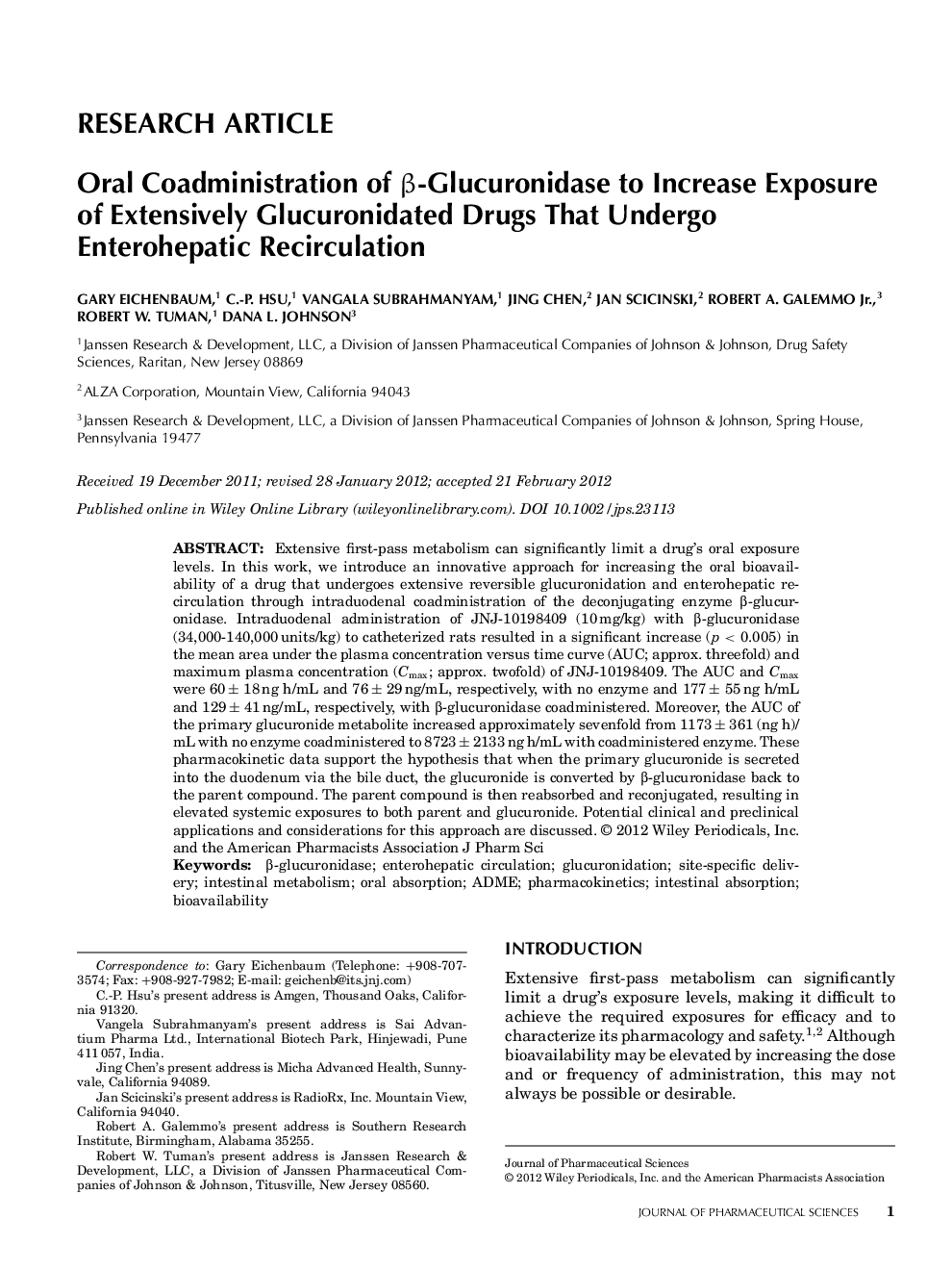| Article ID | Journal | Published Year | Pages | File Type |
|---|---|---|---|---|
| 2485078 | Journal of Pharmaceutical Sciences | 2012 | 12 Pages |
Abstract
Extensive first-pass metabolism can significantly limit a drug's oral exposure levels. In this work, we introduce an innovative approach for increasing the oral bioavailability of a drug that undergoes extensive reversible glucuronidation and enterohepatic recirculation through intraduodenal coadministration of the deconjugating enzyme β-glucur-onidase. Intraduodenal administration of JNJ-10198409 (10 mg/kg) with β-glucuronidase (34,000-140,000 units/kg) to catheterized rats resulted in a significant increase (p < 0.005) in the mean area under the plasma concentration versus time curve (AUC; approx. threefold) and maximum plasma concentration (Cmax; approx. twofold) of JNJ-10198409. The AUC and Cmax were 60 ± 18 ng h/mL and 76 ± 29 ng/mL, respectively, with no enzyme and 177 ± 55 ng h/mL and 129 ± 41 ng/mL, respectively, with β-glucuronidase coadministered. Moreover, the AUC of the primary glucuronide metabolite increased approximately sevenfold from 1173 ± 361 (ng h)/mL with no enzyme coadministered to 8723 ± 2133 ng h/mL with coadministered enzyme. These pharmacokinetic data support the hypothesis that when the primary glucuronide is secreted into the duodenum via the bile duct, the glucuronide is converted by β-glucuronidase back to the parent compound. The parent compound is then reabsorbed and reconjugated, resulting in elevated systemic exposures to both parent and glucuronide. Potential clinical and preclinical applications and considerations for this approach are discussed.
Keywords
Related Topics
Health Sciences
Pharmacology, Toxicology and Pharmaceutical Science
Drug Discovery
Authors
Gary Eichenbaum, C.-P. Hsu, Vangala Subrahmanyam, Jing Chen, Jan Scicinski, Robert A. Jr., Robert W. Tuman, Dana L. Johnson,
